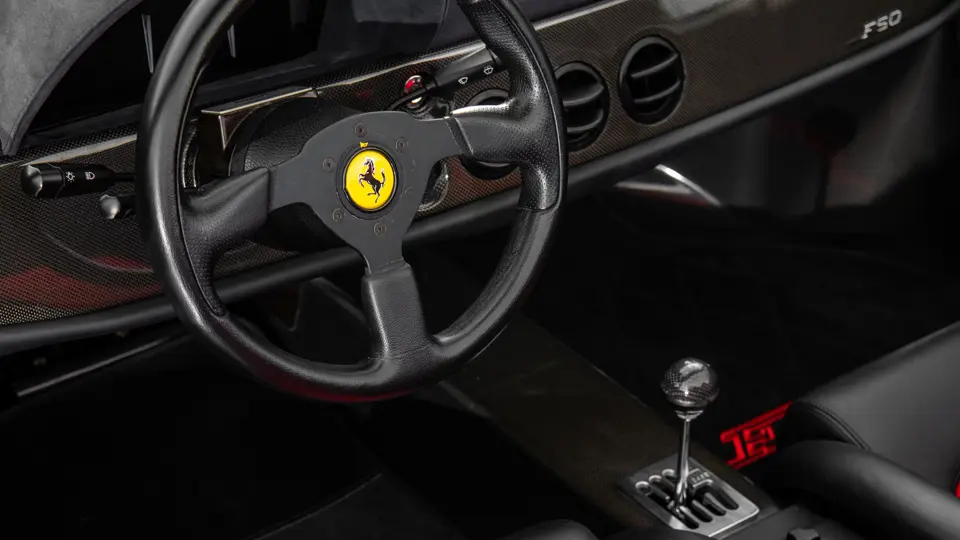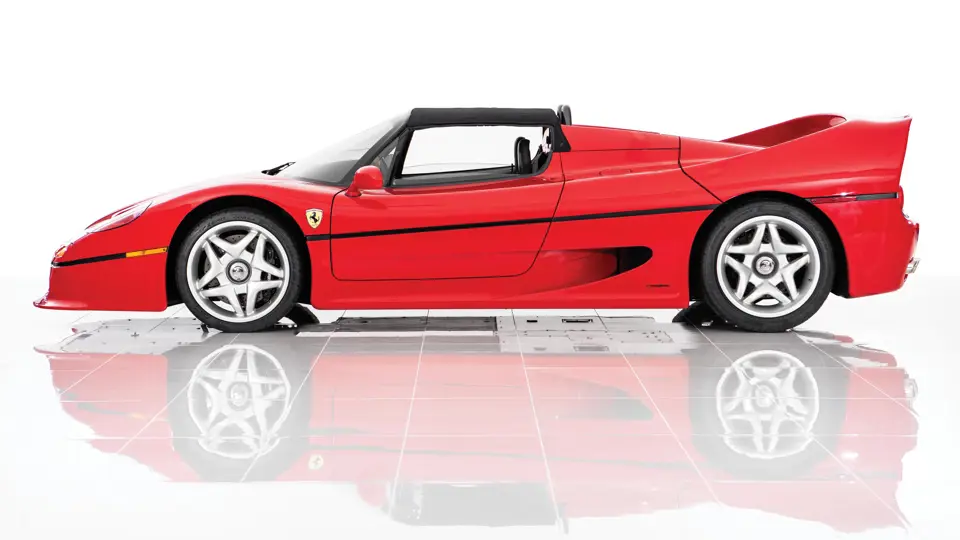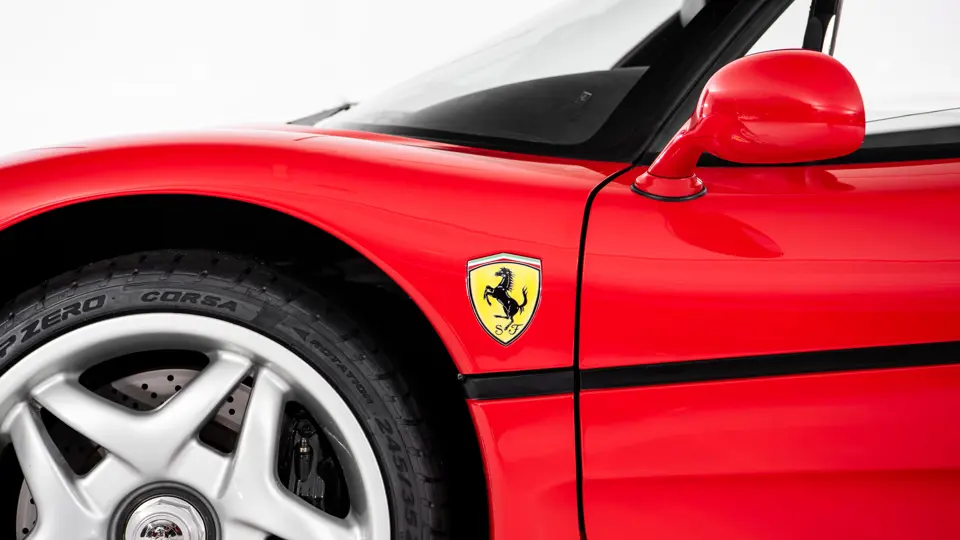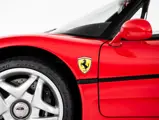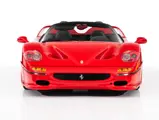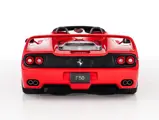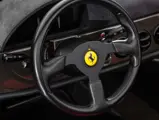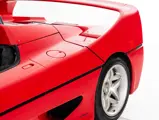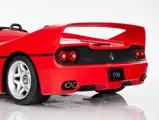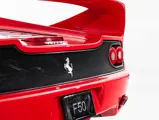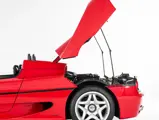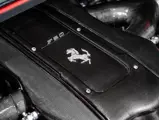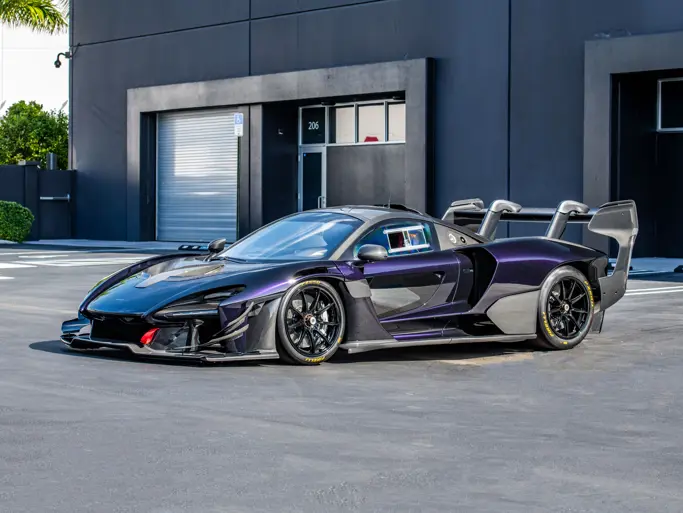
1995 Ferrari F50
{{lr.item.text}}
$3,000,000 USD | Sold
{{bidding.lot.reserveStatusFormatted}}
- Ferrari Classiche–certified
- The 16th of only 55 U.S.-delivery cars
- Offered from a significant private collection
- Remarkably well-preserved original example; less than 8,000 from new
- Includes original tool kit, owner’s manuals, luggage, car cover, and “circus box”
- FCA Platinum Award winner in 2018
- Over $300,000 recently spent on major service, concours preparation, and preservation consultation
The Ferrari F50 was intended as an early celebration of the marque’s 50th anniversary. What bowed under the bright lights of the 1996 Geneva Motor Show was the culmination of everything the automaker had learned over its five decades of existence. The F50’s 512-horsepower V-12 stretched the limits of natural aspiration as it screamed toward its 8,000 rpm redline. The car’s carbon-fiber tub kept the weight in check. The F50 split the difference between raw Ferraris of the past and the high-tech future.
The F50 could trace its styling roots to the Pininfarina-penned Ferrari Mythos concept presented at the 1989 Tokyo show. That car rode on a modified Testarossa platform, as it was largely a styling exercise. An icon of its era, due in part to being featured in one of the first PC video games, the Mythos was not just a virtual icon. The Sultan of Brunei is known to have commissioned at least two examples, one in red and the other in a decidedly period turquoise.
To create the production F50, Ferrari and Pininfarina turned to wind tunnels. The Mythos’ basic shape remained intact, albeit with a curvier design with projector lights housed under headlight covers, deep air intakes in the front hood, a small passenger compartment, and a massive rear wing that likened it to the F40 that preceded it. Enormous center-locking 18-inch magnesium alloy wheels supplied by Speedline took the Campagnolo look from the 1980s into a new decade.
The shapely body was created from carbon fiber and was wrapped over a tub created from the same material. Solid mounts held the race-derived 4.7-liter V-12 into the car. The V-12 itself was closely related to the engine that powered Alain Prost’s Ferrari 641 Formula 1 race car to five checkered flags during the 1990 racing season.
The 65-degree V-12 was placed just ahead of the rear axle. A carbon-fiber-reinforced polymer intake supplied air, while fuel was held in an aircraft-grade Sekur fuel-tank bag to keep weight to an absolute minimum. A longitudinal six-speed manual transmission shuttled power rearward to a limited-slip differential. Cooling came via an oil-water intercooler sandwiched between the transmission’s lubrication system and the engine.
Underneath, the F50 utilized rose-jointed unequal-length wishbones front and rear. Bilstein was tasked with creating electronically adaptive dampers to make what was essentially a Formula 1 car with windshield wipers and a passenger seat. Unassisted power steering ensured that the F50 would live up to its predecessors. After all, the F50 was never designed to scrub mileage as it dashed across the continent. Gigantic Brembo brakes ensured that the F50 would come to a halt quickly after reaching its 202 mph top speed.
Ferrari made no effort to soften the F50 inside, either. Its dashboard was nearly unadorned, consisting of a carbon-fiber panel punctuated by three climate vents. Exposed carbon fiber was visible throughout, which, along with the manual window winders, served to remind occupants that the F50 was an exercise in weight reduction. Unladen, the car tipped the scales at just over 3,000 pounds, a remarkable feat given the power underhood, its relatively long 101.6-inch wheelbase, and the fact that the car’s structure was stiffened considerably because Ferrari chose to include a removable targa roof over the passenger compartment.
Put to the test, the F50 was four seconds faster around the course at Fiorino than the F40 that preceded it. Even Ferrari’s then-president, Luca di Montezemolo, gushed with praise. He told Motor Trend in a 1995 review that the F50 would be “the first and last Formula 1 car with two seats.”
The car hit the American market with an unusual lease program designed to prevent speculators profiting shortly after the F50s landed stateside. Of the 349 examples claimed to have been built, just 55 were earmarked for the American market, including the car offered here. Finished in popular Rossa Corsa, this example was the 16th built for U.S. delivery and was sold new by Miller Motorcars to John Hirsch of Greenwich, Connecticut. After being acquired by the principal of Ferrari of Atlanta in 2000, the car was treated to an especially rigorous service regimen. Servicing took place at both Ferrari showrooms in Atlanta and Fort Lauderdale to ensure it remained in top running condition, and it is one of just a handful of F50s known to have had the advanced fuel-tank bags replaced.
The current owner took one of the nicest original F50s at the time of its sale in 2017 and made perfection his mission. Therefore, in preparation for Ferrari Classiche certification and the 2018 Cavallino Classic, a Ferrari marque consultant who specializes in preservation was hired to oversee that every detail was handled with the utmost care. Over $300,000 was spent over a period of eight months and was not limited to a complete mechanical servicing of the engine, transmission, brakes, and air-conditioning, but also included refurbishing or replacing anything that showed the slightest bit of age with OEM parts or materials while ensuring its proper function. Work included replacing the Tubi exhausts (which are included) with the correct Ferrari OEM exhausts, mufflers, and catalytic converter. Additional parts include a new OEM Lexan, front wheels with new tires, and importing F50 cloth from Italy for the dash and rear section behind the seats. Lastly, the undercarriage was completely gone through and detailed. All invoices are included showing the methodical care the car underwent to achieve this level of condition and preservation.
The owner’s mission was accomplished, as this well-known example was awarded the Ferrari Club of America’s Coppa di Platino its first outing at the Cavallino Classic in January 2018 and was Ferrari Classiche–certified in June 2018. The car remains in immaculate condition as both a concours winner and as an extremely well-preserved original example. The original carbon-fiber pattern remains visible beneath the Rosso paint as one would expect from an original and correct F50. Additionally, the car retains its original accessories, including the removable targa top with its original road case, as well as a complete three-piece luggage set. Furthermore, the F50 includes two sets of keys, owner’s manuals, Ferrari flashlight, tire inflator, car cover, and a complete set of tools, including the wheel wrench with bag and a case of spare lightbulbs and belts.
More than 20 years after it arrived, the F50 remains an absolute high point in Ferrari’s history. As both a rare U.S.-delivery car and a superlatively cared-for example, this F50 will find itself among the best of its kind for its next loving caretaker.




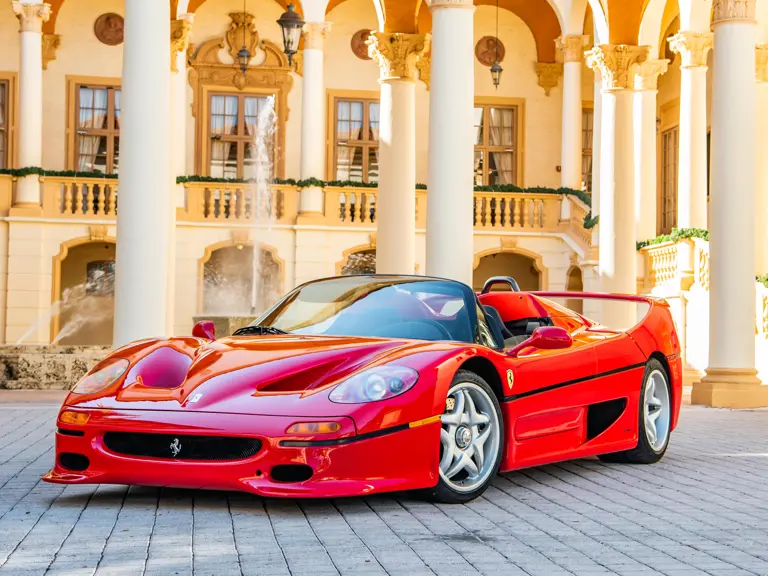

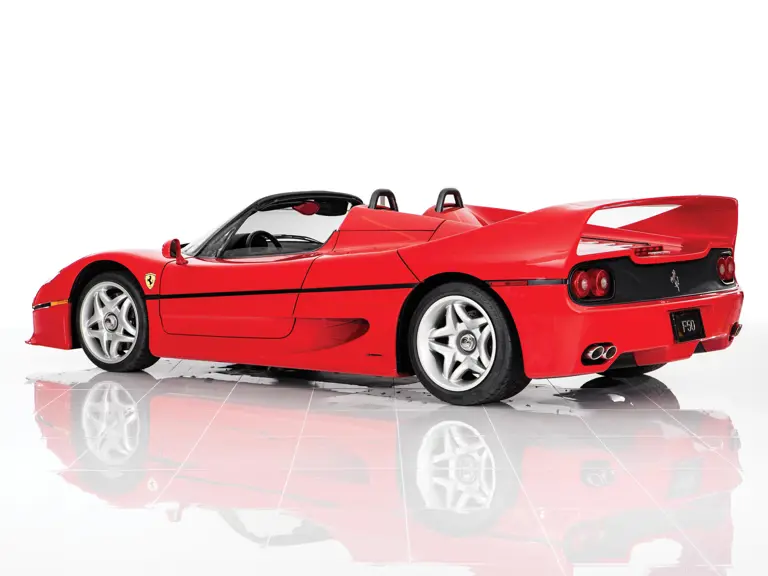

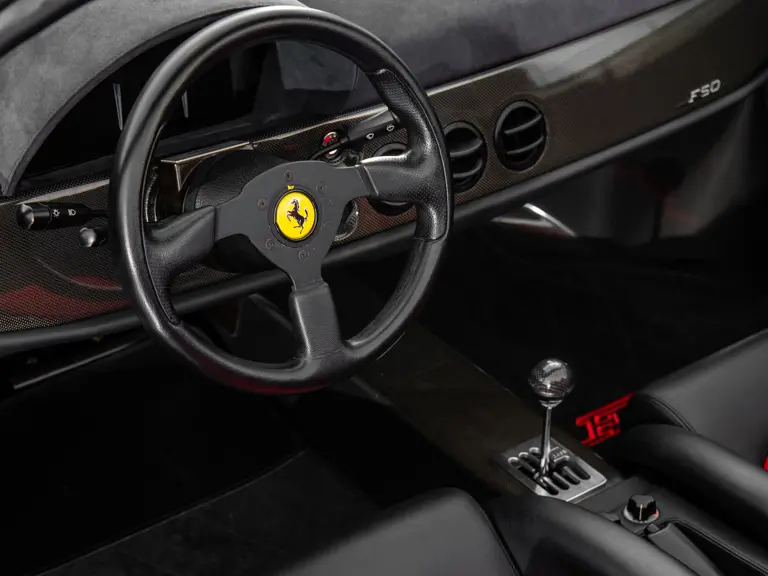
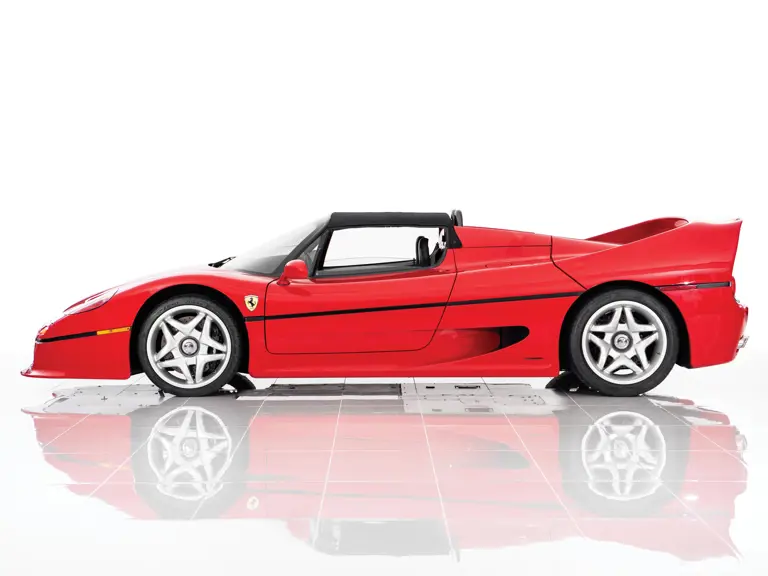



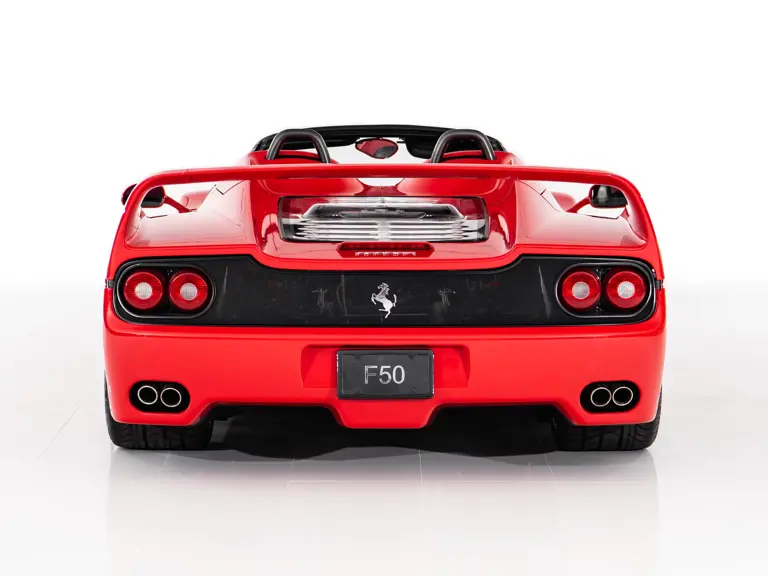
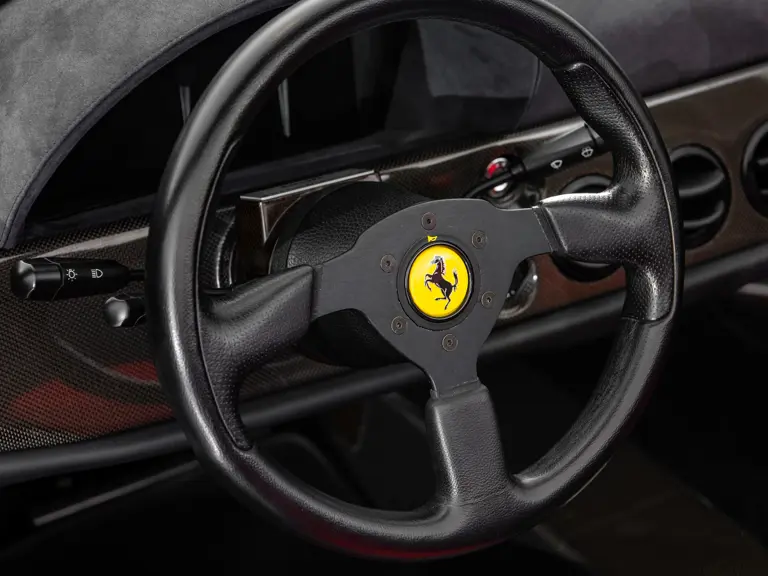

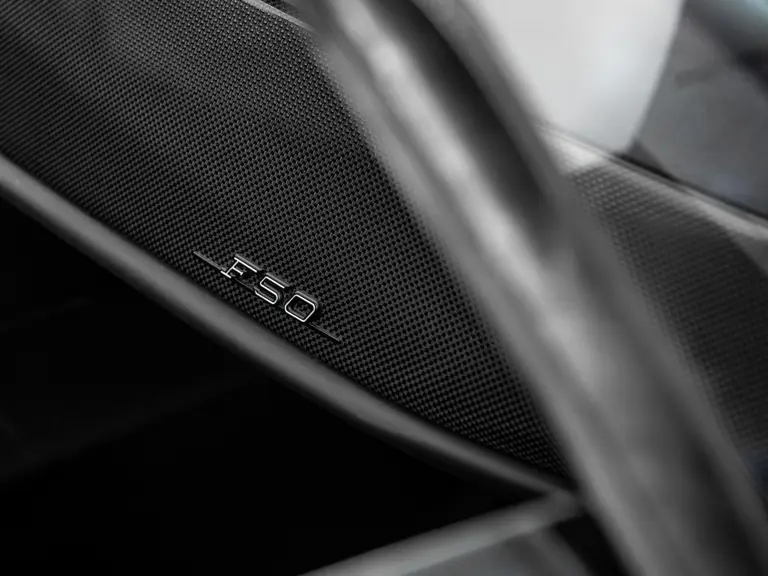
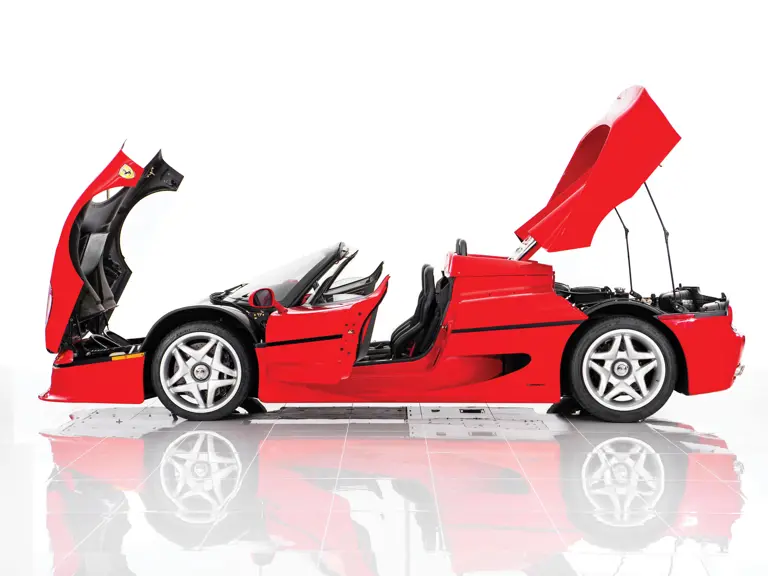

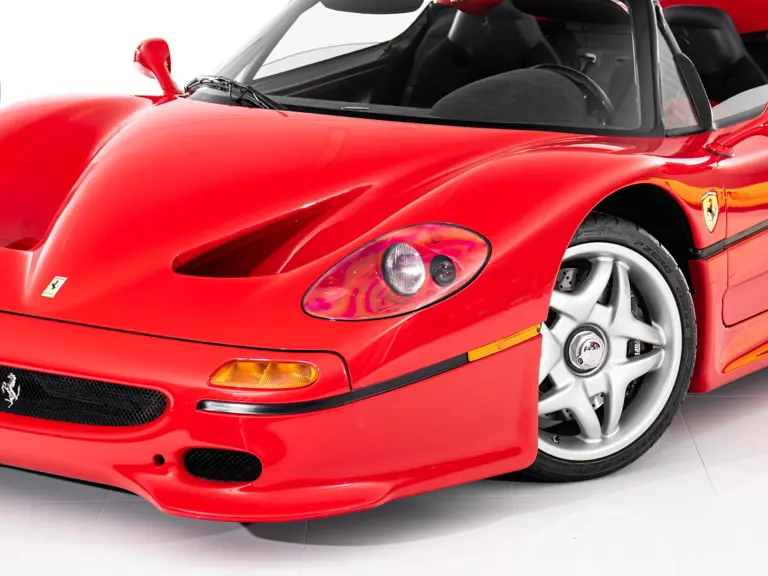
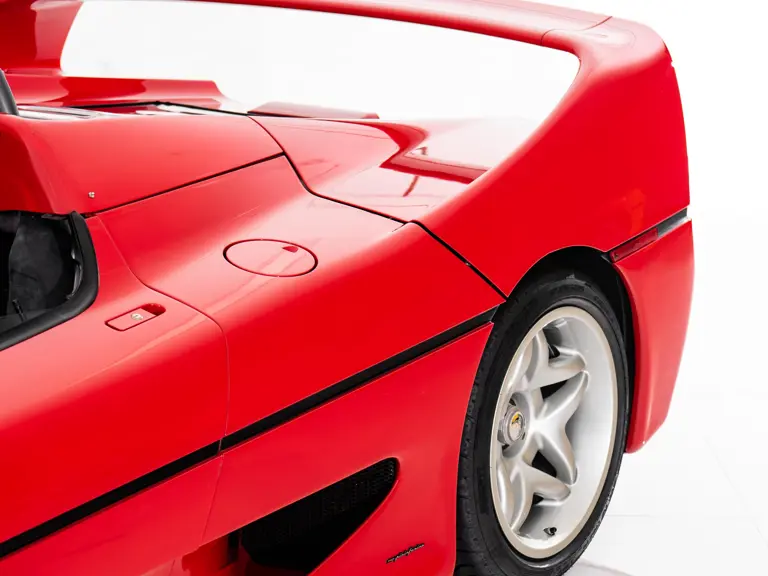
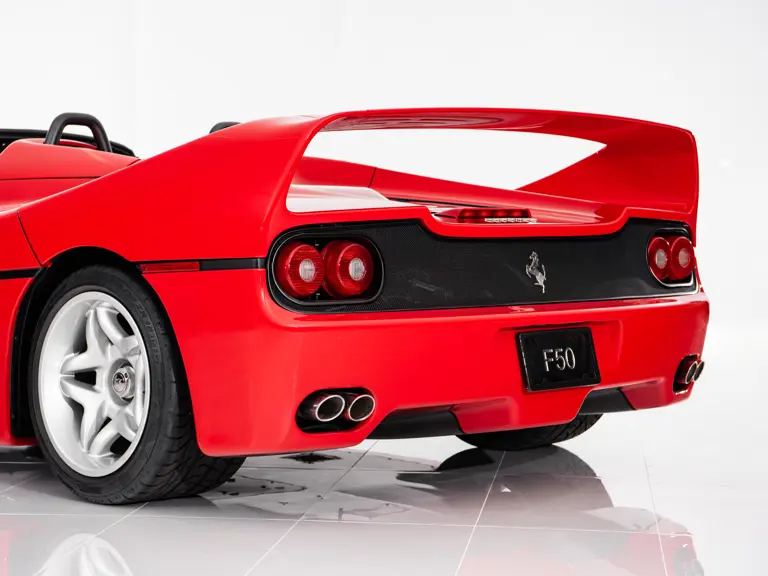
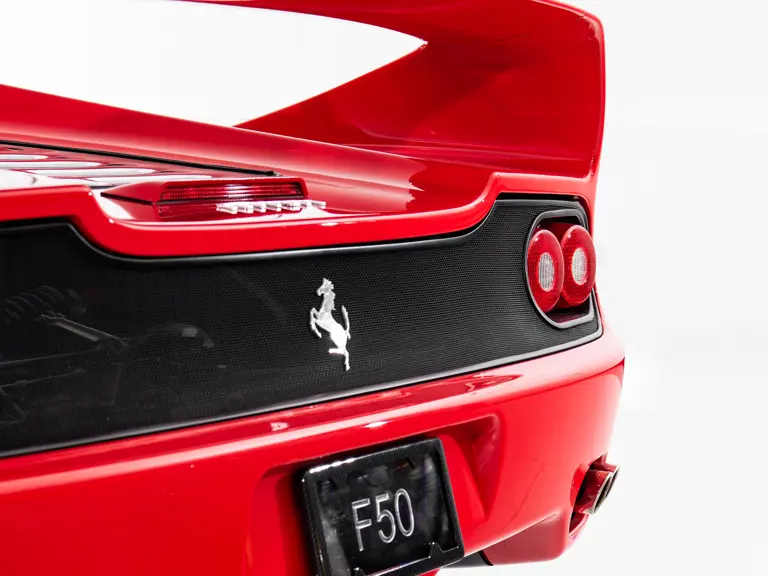


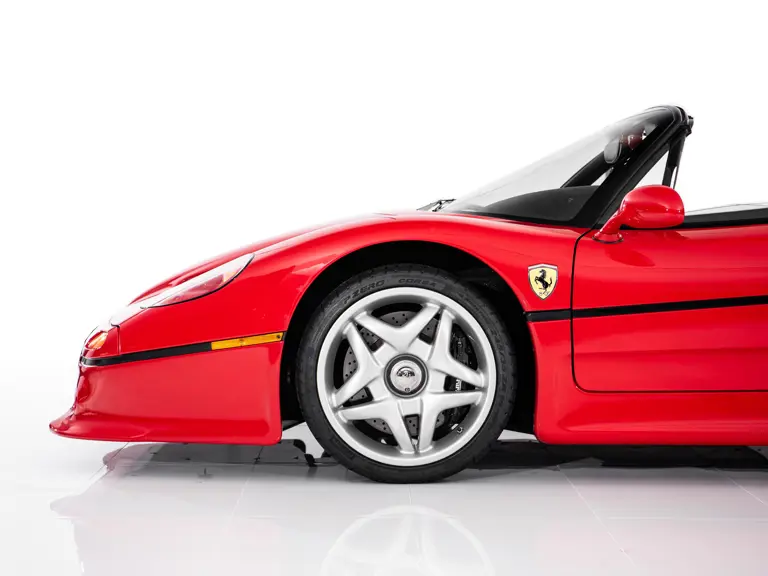
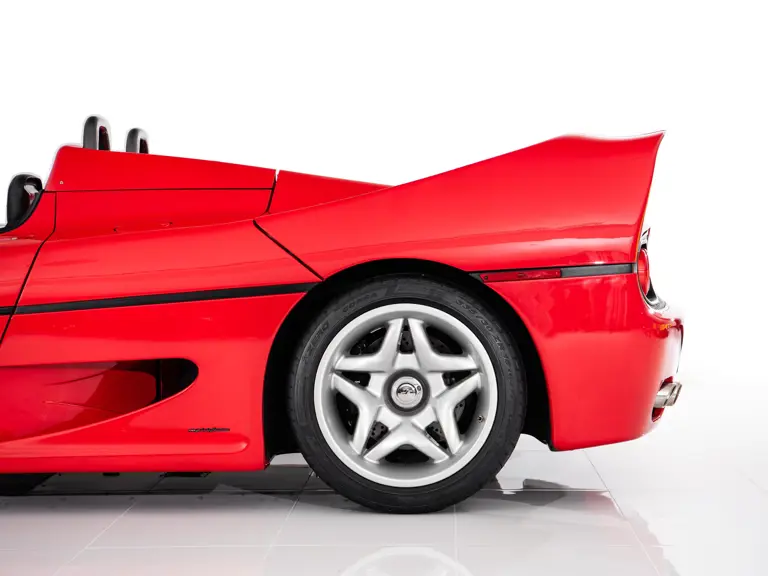
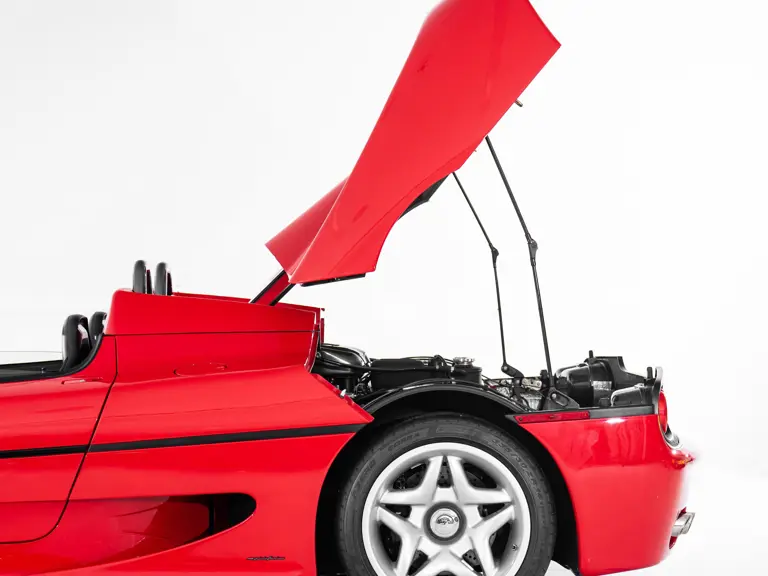
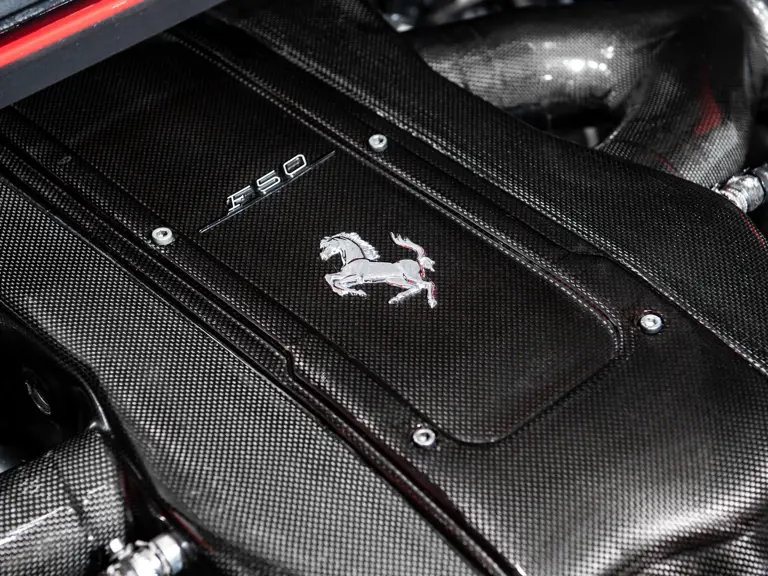
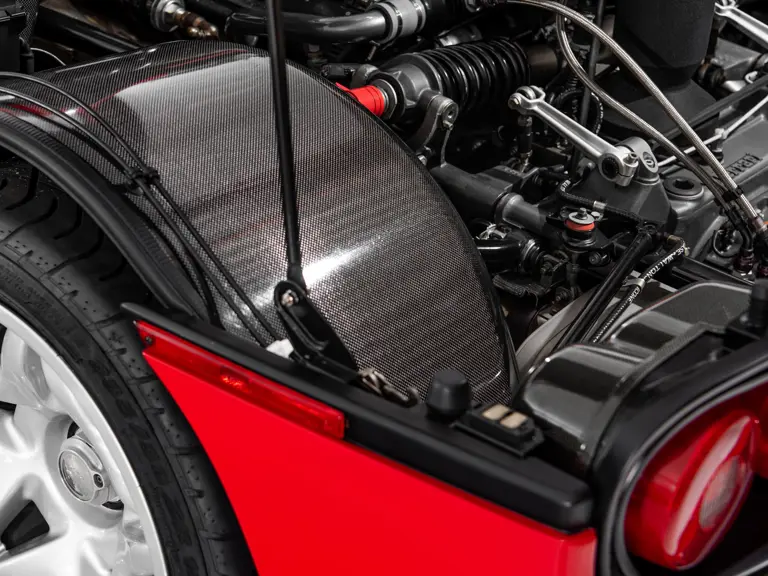
 | Monterey, California
| Monterey, California
